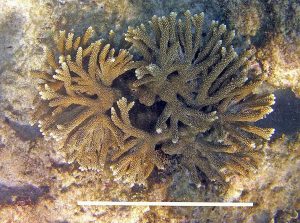The Vauxhall Reef
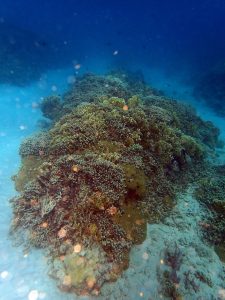
Spur at Vauxhall with close to 100% cover by living corals. View more pics
In 2015, when as retirees we began to visit Barbados in the early months of the year, I was pleasantly surprised to ‘discover’ a very healthy fringing reef close to where we were residing in Holetown on the west coast; the the Vauxhall Reef off of Beachlands
Located in a Recreational Zone of Barbados’s MPA (Marine Protected Area) established in 1981, the high cover of living corals on this reef stood out as an anomaly amongst the other fringing reefs of the MPA and reminded me of reefs I had seen in the 1960s.* Fish populations were generally higher and more diverse on all reefs in the MPA than I had seen in the 1960s* which is attributable to the bans on fishing within the MPA but they were especially impressive at Vauxhall (e.g., associated with large size and diversity of parrotfishes, many pairs of filefish). *In the period 1966-1970, I was a McGill University graduate student based at the Bellairs Research Institute in Holetown, Barbados.
In 2015 I began to document the Vauxhall Reef photographically and I am still at it.
Remarkably, all 3 Acropora species occurred on the Vauxhall Reef in 2015
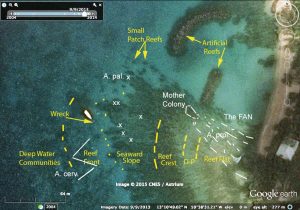
Map prepared from Google Earth showing the reef zones (Lewis 1960) and occurrence of the 3 Acropora species on Vauxhall Reef. Occurrences are based based on observations 2015-2024; most are recorded on iNaturalist.
Click on image for larger version
I was curious to see whether the zonation of fringing reefs in Barbados that I learned about in the 1960s (Lewis 1960) would apply to the Vauxhall site in 2015. Indeed it proved to be fully applicable to Vauxhall Reef in 2015 (map at left).
In the process of looking at the reef more systematically than I would have otherwise, I was astounded to find all three Acropora species on the Vauxhall Reef!
I viewed 2 specimens of A. palmata in the Seaward Slope zone at circa 1-3 m depth (more specimens were observed in later years), and beds of A. cervicornis at about 7 m depth in a restricted area of the Reef Front/interface with the Deep Water Communities
Most surprising, however, was the occurrence of small to large colonies of the hybrid species Acropora prolifera, which I had never seen before, in the Reef Flat zone. The most seaward occurrence was a massive complex of A. prolifera – Millepora – Zooanthids at the inner margin of the Reef Crest zone that I interpret to be the original, “Mother Colony”. It was simply ‘stunning’ in appearance, rivalling those thick A. palmata stands I had seen at Sandy Island so many years ago.
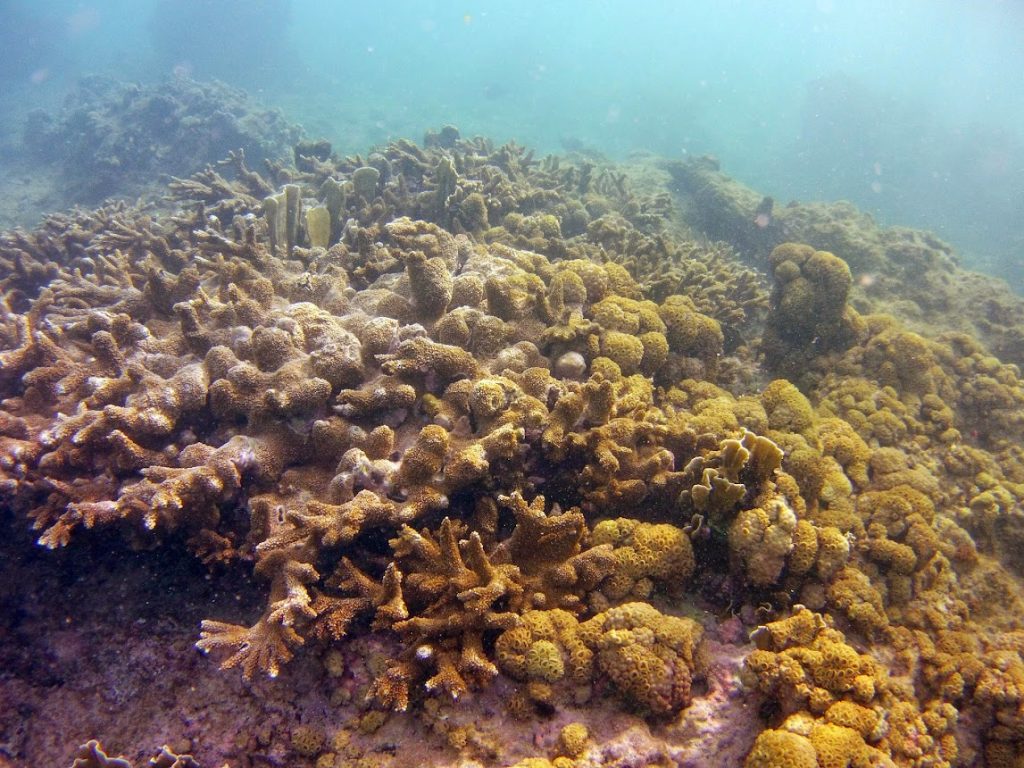
A portion of the “A. prolifera Mother Colony” viewed in 2015. It is a complex aggregation of A. prolifera, the colonial zoonanthid Palythoa caribaeorum, and Millepora complenata (stinging coral).
The Reef Flat is not an area visited by snorkellers – it’s shallow with breaking waves, and generally rather drab, with ‘not much there’ at least superficially. So imagine my excitement when I viewed the scattered, magnificent colonies of A. prolifera, culminating in what I interpreted to be the massive ‘Mother Colony‘ at the inner margin of the Reef Crest Zone!
In early 2015, I reported my observations to Barbados Government personnel who told me that there were indeed anecdotal reports of A. palmata colonies on the west coast which they were investigating, also that they had “a project underway which will look to possibly implement a mariculture or land based coral nursery for future transplantation”. They were not aware evidently, of any reports of A. cervicornis or the hybrid A. prolifera. I also communicated with marine expert Prof Hazel Oxenford at UWI who told me that they were mapping an apparent come-back of acroporoids on the southwest and west coasts of Barbados.
In 2016, R MacLean and H. Oxenford published a detailed, 61 page report: Mapping the return of acroporid corals on fringing reefs along the west coast of Barbados.
Publication of the Centre for Resource Management and Environmental Studies (CERMES), The University of the West Indies, Cave Hill Campus, Barbados).
From the Report (bolding inserted):
In Barbados, anecdotal reports and photographs indicate a potential recovery of acroporids in several locations along the west and south coasts of the island. A total of 46 fringing reefs along the west coast of Barbados from Six Mens Bay in the north to Batts Rock in the south were surveyed by free-diving over the interval June 13th to August 22nd, 2015.
A total of 707 acroporid colonies were found across all reefs surveyed, The vast majority were A. palmata … A total of 21 colonies were positively identified as the hybrid, A. prolifera. Most of these (14 colonies) were found in a small area of Vauxhall (reef 34) and were easy to distinguish from the two true species (A. palmata and A. cervicornis) since they had the ‘bushy’ morphology typical of hybrid crosses where the egg comes from A. cervicornis. However, there were other cases in which it was difficult to distinguish with certainty between A. palmata and A. prolifera with a palmate morphology (a hybrid originating from an A. palmata egg)…
There were no Acropora cervicornis found on any of the fringing reefs in this study...[The presence of] Acropora prolifera colonies indicate sexual reproduction between A. palmata and A. cervicornis and although no A. cervicornis colonies were found on the fringing reefs surveyed in this study, several colonies are known to exist in the deeper patch reef area immediately seaward of some of the fringing reefs (e.g. Vauxhall reef, see annotated photographs of D. Patriquin at: http://versicolor.ca/reef/).
There is a lot more in the Report, e.g. looking at co-occurrence of urchins, size of colonies, diseases etc. In regard to the Vauxhall Reef, the Report confirmed the presence and abundance of A prolifera and evidently in 2015, Vauxhall Reef was the only site at which A cervicornis was observed (that based on my report). That’s important because A. cervicornis is, with A. palmata (also present at Vaxxhall), one of the parents of the hybrid A. prolifera.
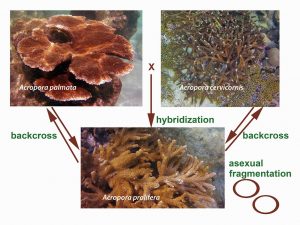
A. prolifera originates as a hybrid between A. palmata and A. cervicornis. Current evidence suggests it cannot propagate sexually on its own, but can backcross with either of the parents. It can also propagate by asexual fragmentation. – Richards, Z.T & Hobbs, J-P.A. 2015. Hybridisation on coral reefs and the conservation of evolutionary novelty. Current Zoology 61 (1): 132–145.
So based on the MacLean &Oxenford Report and my observations, it appears that the only site amongst the Barbados West Coast fringing reefs where there has been significant structural development of A. prolifera is at Vauxhall. There it occurs from the Reef Flat near shore out to a massive Mother Colony” at the beginning of the Reef Crest Zone – what better place for new protective reef to grow!
My assumption/hypothesis is that the original, founder hybrid between A. palmata and A. cervicornis (both of which occur further seaward on the Vauxhall Reef) first got established or took hold at the most seaward location – hence the “Mother Colony” descriptor – and that new, independent colonies developed in a sweep leeward of the Mother Colony through asexual propagation by fragmentation.
There is some evidence that A. prolifera has been increasing in relative abundance in recent years compared to the parental species (Nylander-Asplin et al. 2023), also suggestions that the hybrids may be superior candidates for outplanting (Cassie M. VanWynen et al. 2021). The natural establishment and growth of A prolifera on the Reef Flat, an area not otherwise supporting a lot of coral growth over the last 50 or more years (Lewis, 1960)* and occurrence of densest growth at the inner margins of the Reef Crest zone – certainly a location affording high wave attenuation benefits – seem consistent with these observations and suggestions and were highly encouraging. In combination with the high living coral cover seaward of the Reef Crest zone, the vigorous growth of A. prolifera in the near shore to the Reef Crest zone suggested that Vauxhall Reef was doing exceptionally well and even improving in overall ecological integrity and ecosystem services.*However the reef framework was evidently built largely by growth of A. palmata historically (Lewis, 1984).
I expressed concern in 2015 that two large new developments just being initiated on the shore by the Vauxhall reef could negatively impact the reef and A.prolifera in particular because of it near-shore location. However, I was pleased in subsequent years (2016-2020 and 2023) to see that the builders were taking exceptional care not disrupt the nearshore, and I saw no evidence of any disruption associated with the construction on land.
It turned out, however, that more more global phenomena would have serious negative effects…
2023: The year of SCTLD and Coral Bleaching
It was all well and good, it seemed, for the Vauxhall Reef when I last viewed it in 2020. I looked forward to future years and documenting the development of new reef through growth of A. prolifera, and over time, getting to know the many residents of this reef. Then came 2023!
In early 2023 we returned to Barbados, Holetown area, after missing a couple of years due to Covid-related issues at home. I was on the lookout for SCTLD (Stony Coral Tissue Loss Disease) which I had read about in 2018 and the ominous forecasts of what it could do to Caribbean reefs. It was working its way south from Florida through the Caribbean but in 2020, it was still well away. However, by 2022 it had spread to the southern Caribbean, and there was a report of its possible occurrence on deeper reefs on the west coast of Barbados…
On my first excursion on Vauxhall Reef in 2023, on Jan 11 ” I looked out for SCTLD-infected corals on a route approx. perpendicular from shore that took me across the Reef Flat, Diploria-Palythoa, Reef Crest, Seaward Slope and Reef Front zones (Lewis 1960), to ‘The Wreck”. I saw only one obviously infected coral, that in the outer Reef Crest zone, until I reached The Wreck where there were many, and at least some of them appear to fit the description for Stony Coral Tissue Loss Disease”. Documenting it’s further development would be my obsession for the next 3 months; with collaboration of CORALL and Geography students from McGill, enough evidence was obtained by May 2023 for AGRRA to confirm the presence of Stony Coral Tissue Loss Disease in Barbados – see Post, May 8, 2023.
This disease attacks mainly brain corals. It developed rapidly in 2023, and my first views of the reef in early 2024 illustrated that the reputation of SCTLD as the worst coral disease ever, is well deserved (more to follow…).
Blessfully, SCTLD does not attack the Acroporoids. However, 2023 turned out to be the ‘most extreme Caribbean high temperature mass coral bleaching event yet‘ in the words of Tom Goreau, describing the situation in Jamaica, and Barbados was not spared.

Above: Healthy A. palmata in the “Mother Colony” on April 3, 2023. Below: A palmata dead and covered with algae on Jan 12, 2024
On my first day on the Vauxhall Reef in 2024, Jan 12, I headed directly for the A. prolifera Mother Colony to check it out. My worst fear was confirmed: the entire A. prolfera component was dead and already covered with fine algae. The sea conditions were rough on that day; on Jan 15, I checked out corals on a route from the beach, through the Reef Flat, Reef Crest, Seaward Slope, Reef Front: every colony of A. prolifera was dead, also all colonies of A. cerviconis I observed in the Reef Front area appeared completely dead. Hardly good news!
It was only somewhat later that I was able to look for A. palmata colonies which are not numerous at Vauxhall… In late January/early February, 2024 I viewed and photographed three specimens on the Vauxhall Reef, and 3 more on reefs or breakwaters just to north for which I also had photos from early 2023. The apparent, approx, mortality of these colonies in 2023 was 75%, 100% and 100% for the three Vauxhall specimens, 0% (none) for two specimens on Reef 32 (and a 3rd, small specimen viewed later, no earlier photo was also 0%); and 100% for a specimen on a breakwater. I viewed 3 other specimens on the breakwaters but had no corresponding photos from 2023; for these specimens, one small specimen was entirely healthy; and for two there appeared to have been about 20% die- back. So overall, it appears that A. palmata was much less affected or more variably affected by the warm temperatures of 2023, than were A. prolifera and A. cervicornis and which at least on Vauxhall Reef experienced, evidently, 100% (A. prolifera) or close to 100% mortality (A. cervicornis) in 2023.
UPDATE Mar 6, 2024:I observed one specimen at seaward edge of Reef 33, appears 100% healthy. So all 4 specimens on Reefs 33 (1) and Reef 32 (3) seemed to have been unaffected.
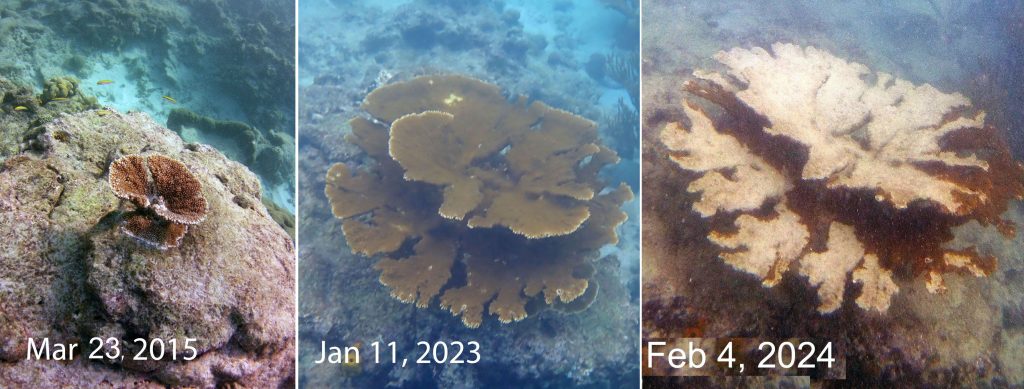
Growth and Demise of an Acropora palmata colony on Vauxhall Reef. The coralline algal base on which the colony established could well be a remnant slab of A. palmata that thrived on these reefs in pre-European/slavery days.
And so… where does leave us?
There is some good news, of sorts, of individual coral specimens, seemingly some species, and large portions of reef in the seaward slope at Vauxhall that remain relatively healthy…(documentation to follow).
So I think it is important not to give up on this particular reef, to continue to study it, enjoy it and to protect and nurture it however we can.
I try to think about the larger picture in the same way.
————
Another version of this “story” includes observations of Acropora palmata at Carriacou
See PatriquinAcroporasUpClose&Personal (PDF, Feb 18, 2024)

